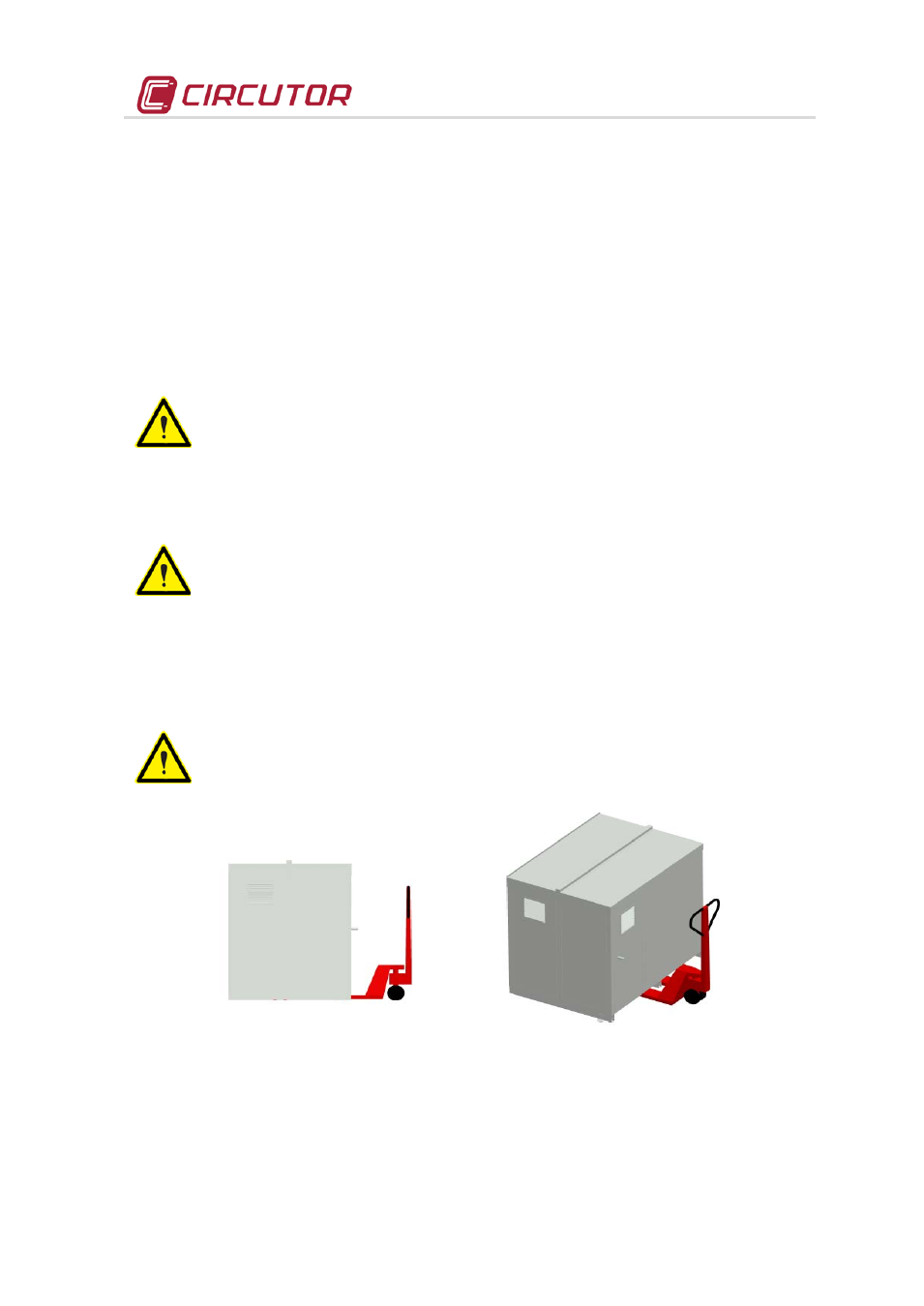3 reception, transport, handling and storage, 1 reception protocol, Eception protocol – CIRCUTOR OPTIM Series User Manual
Page 5: Ransport, Loading and unloading, Handling and storage

OPTIM SERIES
5
3
RECEPTION, TRANSPORT, HANDLING AND STORAGE
3.1
Reception protocol
Make sure that the unit has not been damaged during transport.
Check that the unit received matches the order and that its electrical characteristics are
suitable for the grid where it is to be connected.
Check the shipping documentation. The dispatch note number must coincide with the
number marked on the outer part of the unit.
Unload and transport the unit in accordance with the instruction listed in section 3.2
Perform an external and internal visual inspection of the equipment prior to disconnecting
it.
Check that all items on the packing list are present.
If any discrepancy is noticed upon reception, immediately contact the transport
company or CIRCUTOR's post-sales services.
3.2
Transport, loading and unloading, handling and storage
The transport, loading and unloading and handling of the equipment must be
carried out while taking the proper precautions and using the proper manual or
mechanical tools in order to prevent damaging the equipment.
If the equipment is not to be immediately installed, it must be stored at a location
with a firm and level floor and the storage conditions listed in the technical
features section must be followed. In this case, it is recommended that the
equipment be stored with its original protective packaging.
In order to move the equipment a short distance, the unit's floor support profiles facilitate handling
with a pallet jack or forklift.
The centre of gravity of some units may be found at a considerable height.
Therefore, when handling with a forklift, it is recommended that the equipment
be securely fastened and that no abrupt manoeuvres are carried out. The
equipment should not be lifted more than 20 cm over the ground.
Fig. 3-1 .-Transport with pallet jack
When unloading and moving the equipment, use a forklift with forks long enough to support the
entire length of the base. Otherwise, the forks should be long enough to support at least ¾ of said
depth. The forks must be flat and must be laid firmly on the base. The cabinet must be raised by
placing the forks underneath the profile that supports the equipment. (Fig.3-2).
